Facebook Reveals Smart Glasses: Ray-Ban Stories

Smartwatches have new competition for the tech and fashion world’s “It” wearable, or so Facebook hopes, with the arrival of its much anticipated smart glasses, Ray-Ban Stories, on Thursday.
The first product from the tech company’s multiyear collaboration with EssilorLuxottica, the connected eyewear is fundamentally a combination of mobile camera and bluetooth earphones. Users can take photos and videos up to 30 seconds on the fly, shooting from their first-person perspective, as well as listen to music, podcasts and audio notifications and take phone calls.
More from WWD
Users engage the camera by pressing a button on the right arm of the glasses or simply asking the built-in Facebook Assistant to snap a photo or record a video. Dual LED lights in the upper right corner, one facing the user and the other facing the subject, signal that a photo or video is being captured.
To further help justify taking up that valuable facial real estate, the glasses can also pipe in music and podcasts, read phone notifications or patch through calls, thanks to dual open-air speakers.
But for a device planted on the face, design matters just as much as functionality, so the aesthetics can’t get in the way. That’s been the challenge for many techie eyeglasses, whose bulk or unusual looks can dissuade people before they’ve even tried them.
Facebook understood that scenario early on. As chief executive officer Mark Zuckerberg explained in an announcement video, “We wanted to build something that would enable you to easily capture and share experiences from your point of view. And we thought, if we’re going to build best-in-class glasses, a great place to start is with the iconic Ray-Ban frames that people already love.”
Indeed, Ray-Ban Stories is cast in styles that are already familiar to consumers. They come in Wayfarer, Meteor and Round models in a range of colors, sizes and lens options — including sun, prescription, polarized, gradient, Transitions and clear. In all, the collection amounts to 20 stock keeping units, all of which come with a charging eyeglass case whose built-in battery can fully juice up the unit three times.
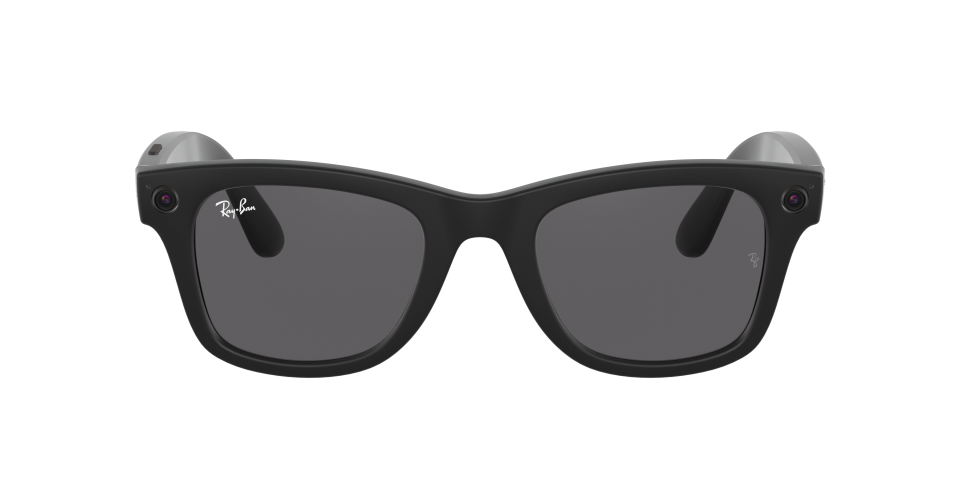
Courtesy image
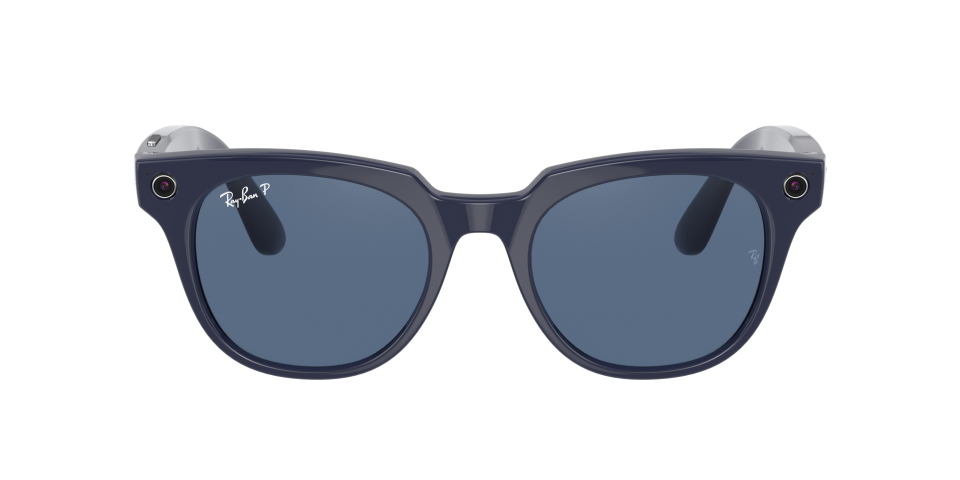
Courtesy image
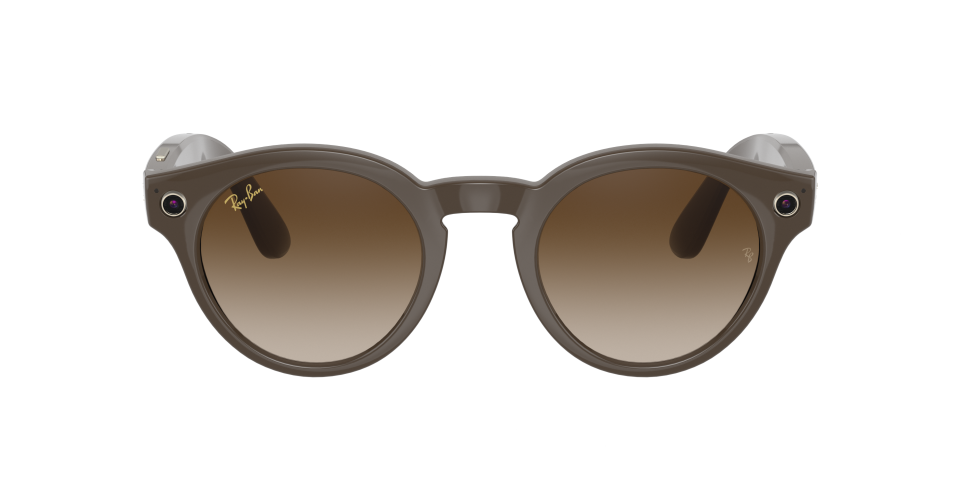
Courtesy image
“The objective was very much to build together something that people actually love and want to wear, something that looks good and can blend into everyday life,” Giaia Rener, global Ray-Ban brand director at EssilorLuxottica, told WWD.
“So rather than starting from a tech angle, which could actually be a little attention-seeking, what we did, we began at the inverse,” she continued. “Everyone knows Ray-Ban items and the distinctive shapes that we post in our range. And if we just recall, for instance, the popular Ray-Ban Wayfarer, which was created in 1952 — it’s one of the most loved eyewear.…[So] we started from the iconic design and really built within it the actual tech part.”
That represented a major challenge, as it meant fitting all the components without compromising the style. The work amounted to a feat of design and engineering.
“Ray-Ban Stories weighs only 5 grams more than a standard Ray-Ban of the same style, which is a huge achievement,” said Rener. “That’s about a teaspoon of salt.”
The temples are also wider, by just mere millimeters, she added. The arms are slightly thicker as well — necessarily so to accommodate the internals, which include two 5 megapixel cameras, a three-microphone array, two speakers, a touchpad, microprocessors and battery, among other components.
And yet, the overall effect doesn’t signal that it’s a gadget. It’s unlikely that anyone will be able to tell that users are wearing cameras. The classic Ray-Ban logo on the lens certainly helps obscure the digital nature of the frames.

Courtesy photo
While that’s an accomplishment, it’s also a risk, and no one knows that more than Facebook itself. Early on, the company made privacy, as well as fashion, a primary principle as it developed the product and experience.
“We understood that we’re launching smart glasses into the world, and we want to make sure [to urge] responsible use,” said Ankit Brahmbhatt, product manager at Facebook Reality Labs. “We’ve consulted with internal experts, as well as external experts across academia, privacy, policy and safety, in order to make sure that we have the right framework in place for the design itself, but also how we message those out in the world.
“So we’ve consulted with agencies like the Future of Privacy Forum, the National Network to End Domestic Violence, the National Consumers League and LGBT technologies partnership, in order to start a conversation from the very early days of Ray-Ban Stories.”
The result led to an emphasis on user education in the onboarding features, which covers safety — such as urging people not to capture while driving — as well as discouraging use in privacy-sensitive areas, like bathrooms or dressing rooms. “And if someone doesn’t want to be in your picture, honor their request,” Brahmbhatt said.
The company made certain processes manual, such as sharing images to Facebook, Instagram, Messenger and the other apps in its ecosystem, or downloading images to share on other social platforms. It also added a manual on/off switch to give Ray-Ban Stories owners the feeling of being in control.
That doesn’t mean people won’t be concerned about wearing a Facebook camera, given the company’s spectacular past privacy failures, or face cameras in general. Indeed, Google’s “Glasshole” phenomenon years ago — the backlash to its early entry into connected eyewear — was an abject lesson in how to tick off the public.
Zuckerberg and company seem to be doing their utmost best to nip concerns in the bud.
The device is not the first, and won’t be the last, connected gadget to lay claim to the face. Snap Inc.’s Spectacles camera device is on its third iteration, while Amazon continues to update its Alexa-driven Echo Frames, with the second generation just getting sunglass and blue light-blocking lenses this summer.
The Spectacles 3’s unusual design is not everyone’s cup of tea, while the Echo Frames — whose thin arms wrap behind the ears before bulking out at the sides — gives away its techie DNA.
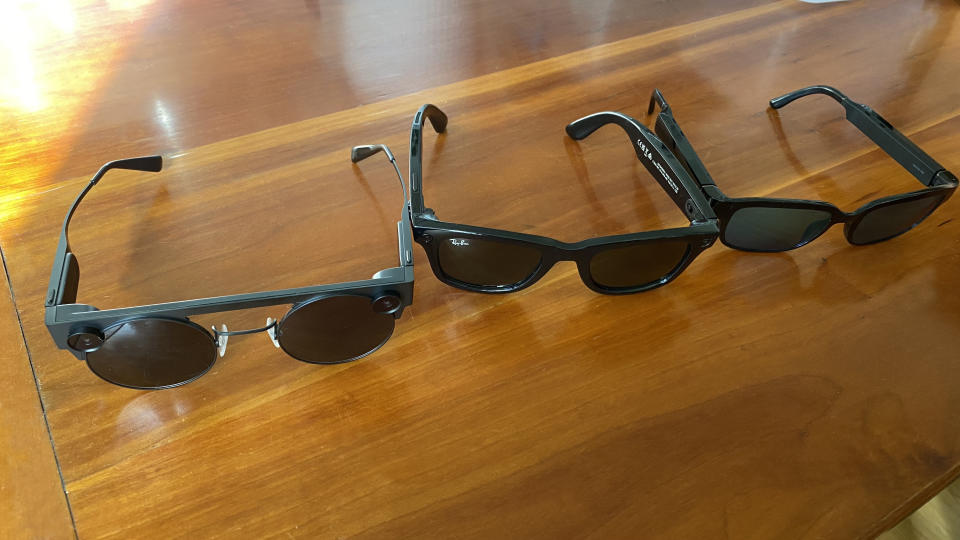
Adriana Lee
The connected Ray-Bans take cues and learning lessons from both of these predecessors, merging both of their main features while hoping to improve on the aesthetics and functionality.
As it is, the images hold up rather well for 5 megapixel cameras, although clearly no one will confuse them for DSLR shots. But during the day, and especially for far-off photos, they can nab impressive results. In the pre-release version of the mobile app, some distortion near the edges was apparent, but that may not apply in the release version of the Facebook View app.
Video capture works well, though the microphone naturally picks up the wearer’s voice most prominently. Stabilization helps beat back jerky movements, though fans of the effect can use the app’s editing features to add shakiness, at least to photos. The app also includes image-editing tools and different types of framing, as well as a montage feature that stitches snippets of captured videos together, ready to share across Facebook’s family of apps.
The premise itself — of having a camera always at the ready to take shots from the first-person perspective — may seem silly and redundant to consumers who already carry a more powerful camera in their smartphones. Perhaps it must be experienced to be appreciated.
For instance, the photos below, snapped quickly while on a walk with friends last weekend, simply wouldn’t have been possible without these frames, at least not without stopping, digging out the phone, launching the camera app and so on. Having an always-on camera, with the option of manually hitting the shutter button or speaking to trigger captures is handy — though it in usage, it did sometimes lag a bit.

Adriana Lee

Adriana Lee
Ray-Ban Stories starts at $299. Standard Wayfarers sell for roughly $160, so whether the tech is worth the extra $140 will depend on the user’s individual preferences and activities.
But its value as an individual device may be different than what it means to Facebook’s grand vision: These smart glasses are but a step to the social media company’s ultimate goal of delivering augmented reality glasses.
EssilorLuxottica may be on deck for that future device as well, though when asked, the company didn’t confirm that. It merely pointed back to its multiyear agreement with Facebook and its commitment to the tech-fueled future of eyewear.
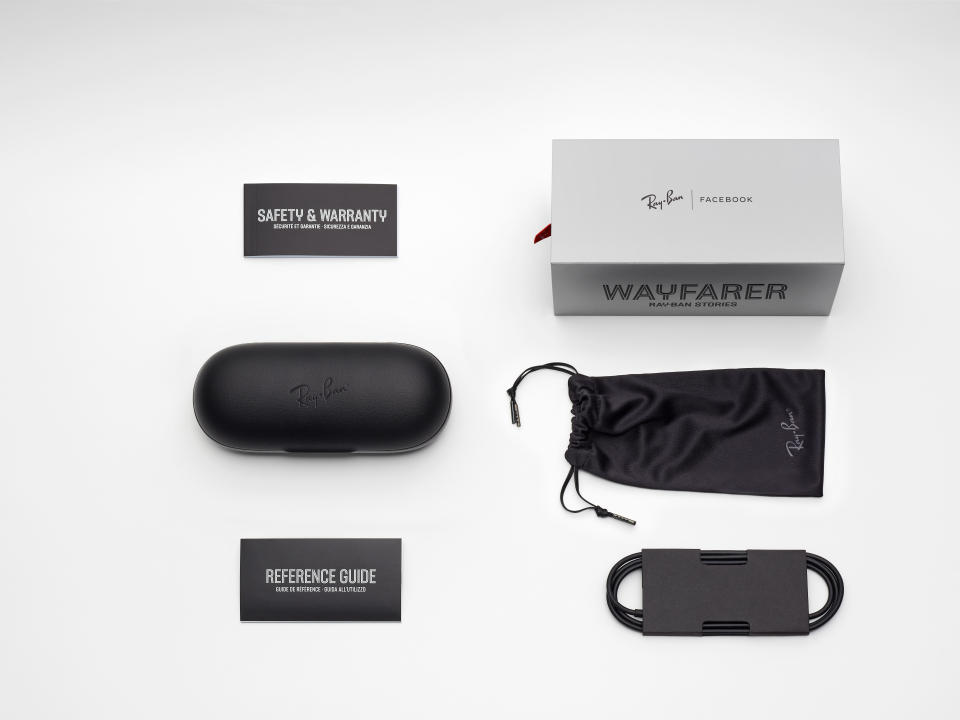
Courtesy photo
Right now, that future is still very nascent and there’s skepticism that consumers will latch on to this type of tech. Then again, tech critics once said the same about smartwatches, a growing market set to hit $96.31 billion by 2027.
It took Apple, today’s market leader in wrist tech, to popularize the category with the Apple Watch. Facebook may be hoping that it can do the same for connected glasses. But it will have competition before long, as Apple is reportedly working on its own faceworn technology.
In either case, it’s clear that design will be crucial to this budding device category, and that could, perhaps, make it worth more than just a passing glance.
Ray-Ban Stories is available immediately at Ray-Ban stores and ray-ban.com in the U.S., U.K., Italy, Australia, Ireland and Canada. It arrives at select Luxottica retail partners on Monday, Sept. 13.
Sign up for WWD's Newsletter. For the latest news, follow us on Twitter, Facebook, and Instagram.

